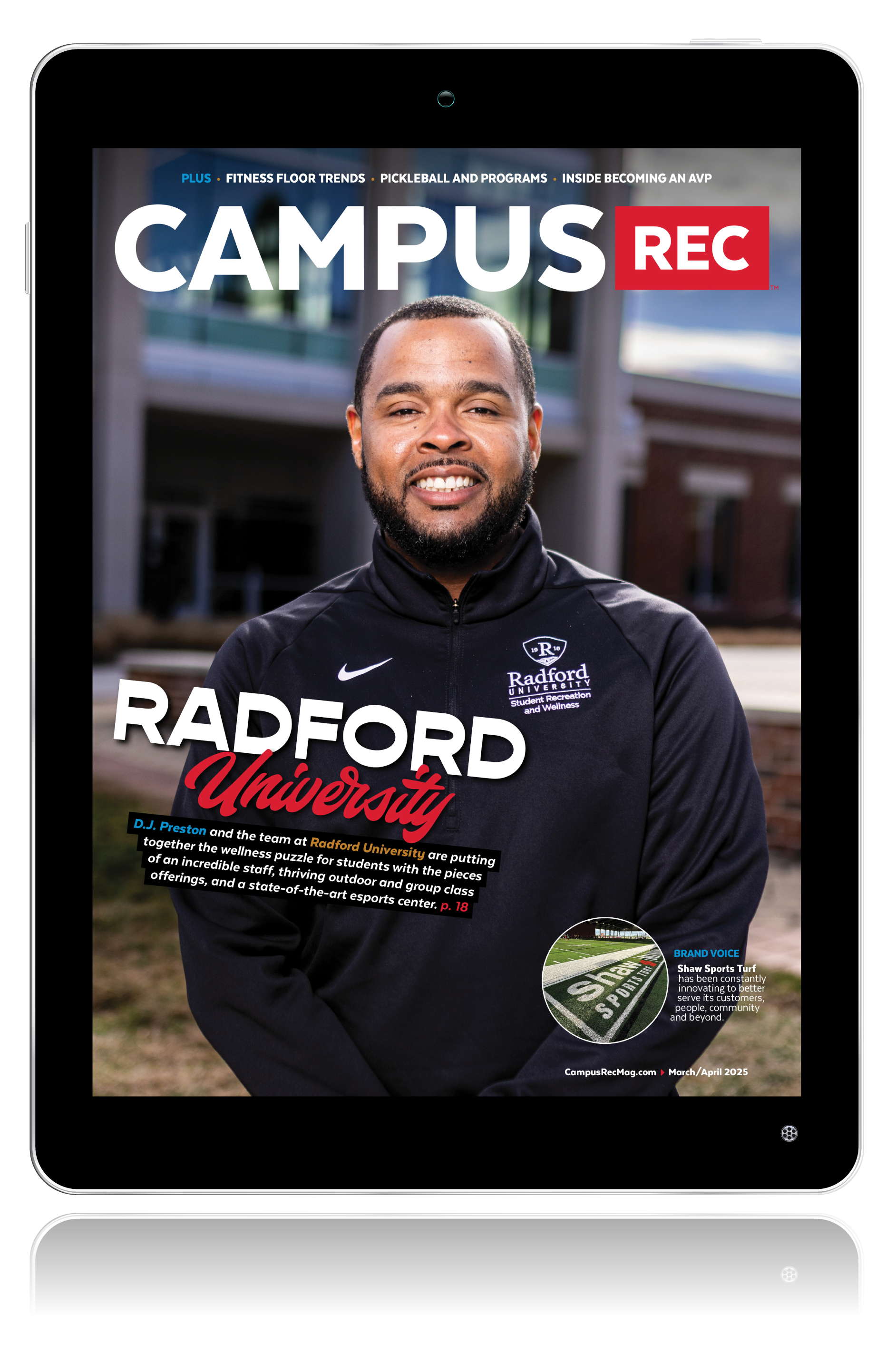
This is Part Five of a five-part blog series that looks to define the five boundaries of leadership and navigate strategies for success in each. Read Part One, Part Two, Part Three and Part Four.
Welcome to the finale. The fifth and final boundary directly affects the other four. In fact, at this present moment, I believe campus recreation, higher education and the global workforce in general has the opportunity to span and capitalize on this boundary with limitless opportunities. Geographic is the fifth boundary we span and is defined as leading across distance, locations, cultures, regions and markets.
As we navigate our fifth boundary let’s recap what we’ve learned so far. Ninety-nine percent of the executives surveyed stated that working across boundaries was “important” and 84% agreed it was “extremely important.” Only 7% of the executives said they were very effective in spanning the boundaries. The comparison of knowing it’s important to span boundaries and actually being effective in doing so leaves us with a critical gap of 79%. The gap of knowing versus doing is consistent across all levels of management. We also learned the drive for innovation is the No. 1 social trend to influence our organizational strategy. As we covered in Part Two, the horizontal boundary is the most frequent boundary that needs to be spanned. What’s No. 2? Geographic.
For the last year, I lived two hours away from my full-time position and taught as an adjunct faculty member online at two additional colleges, one located one-and-a-half hours away and the other in another state: Minnesota. This was executed while still consulting with clients around the world. I don’t say this for pride — I say this because I truly believe our opportunities lie with spanning geographical boundaries. Those I’ve spoken to at conferences, delivered keynotes to, or led continuing education/organizational workshops for often saw me arriving from one coast and departing to a different coast to see clients and colleagues. Every place I traveled, I would learn something I could put in my knowledge and experience toolbox to help me think differently. This not only helps me drive innovation — it helps those I work with. It’s a non-traditional concept when you have client calls in Australia and your Zoom meetings are scheduled for the evening when, in Australia, it’s already the next day.
Here’s what I do know from all these experiences at the end of the day:
- We all have the same goals: to be better, innovate, and deliver a world-class member experience.
- We have a lot more in common than we might think. We have similar challenges, trials and tribulations. When I hear someone say, “It’s just different here,” it’s usually not.
- We don’t have to be in the same location, region, time zone, or even in the office at our desks to create great work together.
In November 2018, I released a three-part series on the Office of the Future. Part One covered the remote worker, Part Two covered technology and automation and Part Three covered the new organizational chart. The last sentence in the office of the future series — Part Three — stated “the office of the future is home” and I don’t believe we realized that two years later, we would arrive at the rumbling we are experiencing today. But perhaps we come out of this better than before and we truly can see the reckoning.
Our geographical workplace truly has been rapidly changing, and after Quarter One of 2020, it was catapulted into a new world with COVID-19. Faculty left classrooms, administrators left offices, and recreation and well-being team members closed facility doors, all posting similar signage stating “closed until further notice.” We had to quickly span geographic boundaries to work together. Many of us had team members who commute to work or have crashpads in town and actually live in other states. This concept may have been new to the recreation world, but had been long existing in the business world.
In fact, since March, I’ve had team members working from Tennessee and Connecticut all while I am based in coastal North Carolina. Given the pandemic, I didn’t ask my team to blow KPIs out of the water, but in my opinion, and based on our metrics, they did.
Two things that helped us through this time were:
- We strategically set ourselves up a year ago to be able to work from anywhere.
- We view spanning geography boundaries as an opportunity.
Creating Higher-Performing Virtual Teams
David Shuster, EdD., who has provided commentary and tips for us throughout this series, shares with us that creating higher-performing virtual teams requires new ways of thinking, interacting and expectations. Recently, with COVID-19, our standard workday and workweek have been eliminated from our operations. This is where that strategy above comes into play. Collectively, you have to adopt a shared communication strategy that outlines the who, what, when, where and why of the plan, and the expectations are clearly understood.
David shares if we don’t understand these expectations, then we may rapidly find new boundaries that weren’t there a few months ago. This is also an opportunity for us to see it should never have been about how many hours a day you are sitting at your desk — rather it’s about the quality of the work you produce. From personal experience and David’s experience, leading from this position encourages trust and accountability, and greatly improves employee engagement and morale.
Developing an Organizational Global Mindset
I used to often joke about campus recreation — or any higher education department for that matter — operating like they were Bank of America. They would make sure employees were at their desk from 8 a.m. to 5 p.m., ready and waiting for folks to come see them. Let’s be serious, who even goes into a bank anymore? In fact, according to ConsumerAffairs, eight in 10 Americans prefer digital banking than going into a physical branch. As of February, mobile banking apps were projected to generate $581.9 billion in 2020. I bet what actually is generated is much higher than that. According to Bank of America, 25 million of their customers use the mobile banking app and they have more than 36 million online banking customers.
The irony is we should be more like the banking industry. Don’t be limited by your walls, your campus, your city or your state. Many of our universities are already adopting this philosophy in the academic setting with distance education. In San Diego, I saw a train car completely wrapped with Penn State colors and logos advertising its online education. Here’s the thing: Many of us have a large presence in distance education or have multiple campuses both in and outside of our home countries. We are even starting to see universities merge with other universities to create a network of satellite campuses. Do we have a responsibility to serve them? Absolutely.
Ask yourself how you are going to serve your students and faculty at these locations. Thinking globally gives us the opportunity to provide needed education and resources around health and well-being. It allows us to engage with folks who are located on our main campus. It allows us to create a global presence and a global sense of pride, and most importantly, a global sense of belonging. And if we dive deep enough in ourselves, we may even realize the sense of belonging first felt is our reason why we do what we do today.
Yip, J., Ernst, C., Campbell, M. (2010), Boundary spanning leadership. Mission critical perspectives from the executive suite. [White paper]. Retrieved from https://cclinnovation.org/wp-content/uploads/2020/02/boundaryspanningleadership.pdf
Trotter, Steven A. (2019, June). Living and working a strengths based life. [Workshop] Hagerstown, MD.










